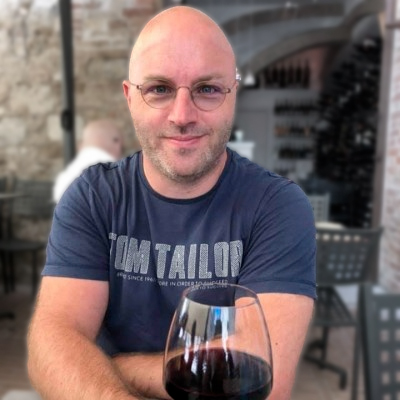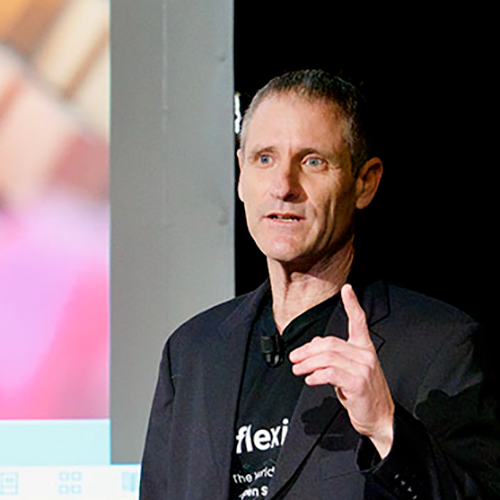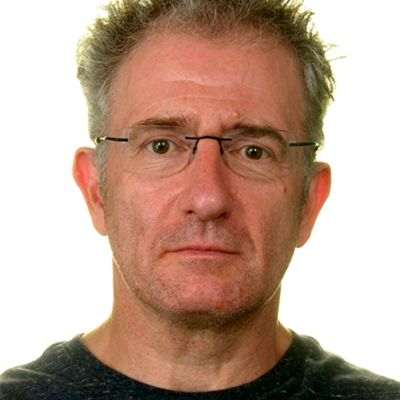- Registration and welcome coffee from 08.00
- Exhibition open from 09.00 to 16.00
- Lunch: 12.10
MORNING SESSIONS
 Chairman
ChairmanRoland Thienpont, Director IP Division Product Marketing, Nokia
With the advent of Open Network solutions with Openconfig as the vendor-neutral data model and gNXI (gNMI, gNOI, gNSI) as the gRPC-based services landscape, customers can overcome the complexity of managing the multi-vendor solution. Showing how the open network management solutions are evolving and solving real-world use cases.

Alok Pandey, Sr. Product Manager, Juniper Networks
Alok Pandey is an accomplished Product Manager with over 8 years of experience in Cloud/Infrastructure security & Open Network Management solutions. During his stint as a product manager with Juniper, Cisco & Intel, he has envisioned several products solving real-world problems and ultimately gaining industry-wide acceptance.

Qin Wu, IETF IAB Member, Huawei Technologies
Qin Wu is an expert on Network Management Architecture with Huawei's Data Communication in China. He is also responsible for enterprise networking innovation and standards work such as IoT, Security, SD-WAN, Edge Computing and involved in strategic standards development, engaging with some related open Source Projects such as FD.io, ONAP for more than 10 years, held various positions in IETF, ITU-T and CCSA. He has over 16 years of experience on network architecture and protocol design, starting from mobility management, performance measurement, IPTV to SDN, NFV, network management automation and YANG, telemetry, AIOPs,etc. Currently he focuses on driving digital twin networking and Network and Application collaboration. He used to chair IETF l3SM and L2SM working group in OPS area, currently serve as IETF IAB member and chair ALTO Working Group in Transport area, serve as a member of OPS-DIR Directorate, IoT-DIR Directorate, coauthor of over 54 RFCs spanning six IETF Areas (OPS, SEC, RTG, TSV, RAI, and INT). He received his Ph.D degree of Control Theory and Engineering from Nanjing University of Science and Technologies.
Exploring the main multilayer coordination use cases and highlighting their benefits. Those use cases are grouped into three categories: discovery, correlation, and optimization.

Hans Naert, Product Manager, Nokia
Hans has over 20 years of experience within the networking and data communications industry, in the areas of engineering, technology and product management. From early 2000 until 2015 he worked in engineering in different roles on Access and IP/MPLS routers. From 2016 to 2020 he worked in New Product Introduction for Nokia’s Network services platform. Since 2021 he took the role of regional product manager for Network services platform Hans holds a MSc. in Electronic Engineering with a specialization in broadband circuit design from the P.I.H. Kortrijk (now part of Ghent University).
Describing the use of the color attribute to provide differentiated services across the network. Showing how colors can be invoked by Yang network models for L3VPN, L2VPN and network slicing in order to translate user intent to actual transport mappings at the network layer.

Julian Lucek, Senior Distinguished Systems Engineer, Juniper Networks
Julian Lucek is a Sr Distinguished Systems Engineer at Juniper Networks, where he has been working with many operators on the design and evolution of their networks. Before joining Juniper Networks, he worked at BT. He has a PhD in ultrahigh-speed optical transmission and processing from Cambridge University. He also has a Master's degree in Physics from Cambridge University. He is the holder of several patents in the area of communications technology. He is co-author of the book "MPLS-Enabled Applications: Emerging Developments and New Technologies", by Ina Minei and Julian Lucek.
Disaggregated solutions for management, IP and Optical infrastructure are moving beyond the concept and definition phases to live deployments. Showcasing examples and benefits of these solutions.

David Stokes, Head of IP Solutions & Portfolio Marketing, Ribbon Communications
Describing the programmability and automation features supported on Cisco IOS XR platforms (but not limited to) with the recommendation where to start programmability journey with the maximum outcome. Discussing industry trends, major activities in the area including YANG-based API, RIB APIs and the tooling available right now to get started.

Mike Korshunov, Manager Technical Marketing, Cisco
Mike leads IOS XR technologies TME team for Provider Connectivity Group @ Cisco. His day-to-day activities focused on programmability and tinkering CI/CD tooling. Over the last ten years, Mike covered different roles in software engineering and technical marketing.
Covering a few examples of how custom network apps can be built rapidly for data center networking platforms along with key building blocks and architectural aspects related to their underlying NOS.

Sergio Santos, Product Line Manager, Nokia
Sergio is a Product Line Manager at Network Infrastructure business group for the EMEA region and is based in Lisbon, Portugal. He is part of the Datacenter product management team since 2019 and is contributing to the development of the datacenter fabric automation suite. He has over 14 years of experience in the networking industry, had worked in optical and IP/MPLS network domains, with roles varying from support to pre-sales engineer.
Multicast could provide efficient P2MP service without bandwidth waste. Multicast source routing is able to reduce the state of intermediate nodes and indicate multicast forwarding in the ingress nodes, which could simplify multicast deployment.

Geng Xuesong, Senior IP Standards Representative, Huawei Technologies
She has 6+ years network design and research experience. Active in Deterministic Networking, 5G Transport and Multicast Source Routing.
MORNING SESSIONS
 Chairman
ChairmanAmir Zmora, CEO & Co-founder, flexiWAN
Amir Zmora is CEO & Co-founder of flexiWAN, the world’s first Open Source SD-WAN & SASE. Before starting flexiWAN, Amir was CEO & Co-founder of SwitchRTC, a Real-time, interactive WebRTC based video CDN and B2B/B2C collaboration solution acquired by YouNow. Among his previous positions, Amir was VP Products & Marketing for the Technology Business Unit of RADVISION, an Avaya company.
Describing the Next-Gen MPLS termed “MPLS Network Actions (MNA)” enabling MPLS/SR (Segment Routing)/EVPN networks with new applications such as network slicing, time-sensitive networks (TSN), advanced IOAM, Service Assurance (SA), and Performance Measurement (PM), advanced telemetry, etc.

Rakesh Gandhi, Principal Engineer, Cisco
Rakesh Gandhi is a Principal Engineer in Cisco's Service Provider Routing Organization since last 22 years. He has worked with a large number of Internet and Service Providers to define innovative solutions for Routing and Traffic Engineering and delivered them on various Cisco's routing platforms running IOS-XR operating system. In his current role, he is defining and delivering solutions for the Performance Measurement, Liveness Monitoring and Path Tracing for Segment Routing technology. He is an active contributor and presenter at IETF and has published 10 RFCs and is a co-author of number of working group drafts. He holds over 35 patents and has number of publications in the field of telecommunications networks. He has a Bachelors’ degree in Electronics and Communications Engineering from Gujarat University, India and a Masters’ degree in Electrical Engineering from University of Ottawa, Canada.
Providing an overview of the requirements and architectural foundations of MPLS network actions, currently being standardised in the IETF. Looking at the new emerging applications driving this work, and how solutions can be found that enable the MPLS toolset to evolve, while maintaining backwards compatibility with currently deployed networks.

Matthew Bocci, Director, Technology and Standards, Nokia
Matthew Bocci is Director of Technology and Standards with the Service Router product management team at Nokia, specialising in MPLS/Segment Routing, IP routing, Layer 2 and Layer 3 VPNs. He is also co-chair of the IETF Network Virtualisation Overlays (NVO3) and BGP Enabled Services (BESS) working groups, and has been a regular contributor to the IETF for many years. Matthew has co-authored numerous publications and IETF drafts and RFCs on MPLS-based converged networks, as well as being a regular speaker at industry conferences. Previously, Matthew provided advanced technical consulting in traffic management, signaling and network performance with Newbridge Networks. He holds a PhD in network modeling from Queen Mary & Westfield College, London.
Memory constraints in early BGP speakers caused classic BGP implementations to not keep a full Adj-RIB-In. When doing RPKI-based Route Origin Validation (ROV), and similar RPKI-base policy, if such a BGP speaker receives new RPKI data, it might not have kept paths previously marked as Invalid etc. Describing how implementations can keep and mark paths affected by RPKI-based policy, so Route Refresh is no longer needed.

Keyur Patel, Founder & CTO, Arrcus
Describing a method using the Intent described in configuration model to automatically build a service assurance model and to get service specific health metrics for use by operators to view the service specific health.

Krishnan Thirukonda, Principal Engineer, Cisco
By combining capabilities in transport network and RAN automation, machine learning, service assurance, analytics and monitoring, demonstrating progress towards a self-driving network for communications service providers. Transforming todays OSS into the CSP operating system of tomorrow. Discussing select automation use cases to establish proof points on the journey to self-driving networks.

Gerhard Wieser, VP Automation, Elisa Polystar
Gerhard Wieser is VP of Automation at Elisa Polystar. Gerhard co-founded FRINX s.r.o. which was acquired by Elisa Polystar in March 2022. Gerhard received a patent award from the US Patent and Trademark Office for his work on “System And Methods For Compressing Message Headers”. He co-wrote a book on MPLS VPNs for Prentice Hall/Pearson Education (“MPLS-Based VPNs: Designing Advanced Virtual Networks”) and was a contributor to the “Operationalization Of Software-defined Networks (SDN) Program Review”, conducted by the National Science Foundation and Department of Energy.
Network convergence is more than just plugs in routers. Operational simplification and improved network reliability have been highlighted as primary drivers for moving towards tighter coupling of the IP and optical layers. Examining how IP and optical network design practices can also benefit from a more converged approach.

Serge Asselin, Senior Director, Network Planning and Analysis, Ciena
A veteran of the optical networking industry, Serge led some of the early development initiatives targeting packet-optical integration on SONET/SDH products. He now specializes in network optimization strategies and tools spanning packet and optical layers.
Auto-fabric defines a set of procedures, and protocols that enable nodes, within a Clos topology-based scale-out WAN fabric to self-discover their roles within the fabric (leaf, spine, super-spine), subsequently self-configure their “day-0” configurations and publish a model describing the fabric consumable by other applications and systems.

Colby Barth, Distinguished Engineer, Juniper Networks
Colby Barth is a Distinguished Engineer at Juniper Networks for the past 13 years, working in the JunOS Routing Protocols group. Colby has over 20 years of experience designing, building, and operating IP/MPLS networks.
Highlighting a set of capabilities within the EVPN architecture, that contribute to security, performance, resilience, and cost efficiency in the delivery of overlay virtual private network services.

Siegfried Droogmans, IP Consulting System Engineer, Nokia
Siegfried (Ziggy) Droogmans is an IP Consulting System Engineer in the Regional Business Center of the Nokia Network Infrastructure division with 20+ years of IP/MPLS networking experience at mayor ISPs in the EMEA region, providing design guidelines based on best practices and customer requirements. His expertise is in the SR-OS and SRL portfolio with special focus is on L2/3 services, EVPN, DCI and DC Fabrics.
In-situ Flow Information Telemetry (IFIT) is a family of passive and hybrid data-plane telemetry technologies defined by IETF, including Alternate Marking (RFC9341), In-situ OAM (RFC9197), and IOAM Direct Exporting (RFC9326).
Discussing deployment experiences on EVPN scenario, and how IFIT can facilitate OAM and operational automation.

Tianran Zhou, Senior Principal Researcher, Huawei Technologies
Tianran Zhou is the Technical Director of Internet Standards at Huawei Datacom. He is also the Network Architect at Huawei Cloud, and Consultant at Huawei IT OPS. In addition to the co-chair of OPS Area WG in IETF, he is active in many SDOs and Open Source projects. He is the TC3WG1 Leader in China Communications Standards Association. He was project leader in OpenDaylight, OPNFV, and ONOS. He is the member of IXP Alliance in China, and is a key contributor to the IXP deployment and standardization. He is the Chinese IETF Meetup SteerCo, promotes IETF and expedites IPv6 deployment in China. He received the Ph.D. in Communication Systems from Beijing University of Aeronautics and Astronautics, and visited the University of California at Irvine from 2008 to 2010. Now he is the Invited Lecture on Internet in Beijing University of Posts and Telecommunications.
Providing a strong cookbook overview of solutions delivered recently. Subjects being covered include Fast convergence, Flexible CE connectivity, DC applicability, Dynamic IP tunnels and future looking services.

Patrice Brissette, Distinguished Engineer, Cisco
Patrice Brissette is a Distinguished Engineer and Lead Architect of EVPN & Service Overlay Technologies at Cisco Systems, specializing in Web and Service Providers port-folio. With 25 years of R&D experience in the telecommunications industry, he has worked with large customers and marketing teams on strategic product development and architectures. He is an active member of IETF and other standards organizations, using his expertise to drive innovation and push the boundaries of the industry.
